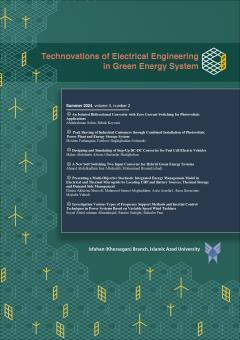-
-
-
Open Access Article
1 - Portable Energy Storage Systems Expansion Planning to Improve the Power Systems Resilience
Mohammad Reza Sheibani Mehdi Zeraati Farkhondeh Jabbari Ehsan Heydarian-Forushani -
Open Access Article
2 - Short-Term Forecasting of Wind Farm Power Production Using a Modified Artificial Neural Networks Based Algorithm in Python: A Case Study in Manjil
Hamid Jabari Ardalan Shafiei-Ghazani Farkhondeh Jabari
List of Articles Farkhondeh Jabari
-
The rights to this website are owned by the Raimag Press Management System.
Copyright © 2021-2025


